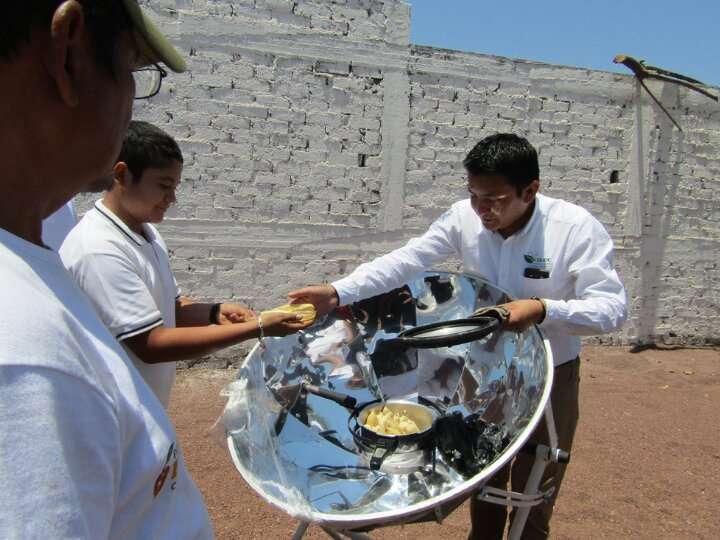
Turning environmental pollutants into renewable solar energy while reducing carbon emissions may seem like something plucked out of a science-fiction film, but researchers from the University of Houston and Mexico’s Universidad Intercultural Indígena de Michoacán are working to make that proposition a reality.
Francisco Robles-Hernández, UH professor of mechanical engineering technology and Luis Bernardo López-Sosa, professor of engineering for energy sustainability at UIIM, have demonstrated how soot, the byproduct of burned organic materials like biomass, carbon and hydrocarbons, can convert solar energy into heat.
The biomass extracted from burned wood in the Mexican state of Michoacán was found to be the most effective, according to the findings published in the journal Carbon. Ultimately, the researchers used the soot to produce a paste-like coating with high solar-to-heat-conversion efficiency.
“Our raw materials are sustainable, though are currently considered environmental pollutants. However, they are ideal for reducing carbon footprints and can contribute to a true net-zero energy transition,” Robles-Hernández said.
Soot, including black carbon, are a major contributor to the polar ice caps melting, and their sequestration is of major interest to climate and energy researchers.
Robles-Hernández and López-Sosa, a former doctoral student under Robles-Hernández’ at UH, created flat pellets and coatings made from soot from burned wood, pet coke and other hydrocarbons. Their investigation found soot derived from biomass, in most cases, had better properties to absorb solar energy and convert it into heat compared to other pristine carbon structures, such as fullerene, graphene or nanotubes.
“There is no energy involved in producing soot because it is an abundant byproduct, and its circular-reutilization can only reduce carbon footprints. The cost is near-zero, which makes it cost-effective and ideal for solar to heat conversion,” said Robles-Hernández, who noted aspirations to move toward commercialization.
To put their biomass-derived coating into action, the team engineered solar stoves that can be heated up to 400 degrees Fahrenheit. The cost to produce the stove is $150, but the new coating that powers it only costs about $1.00 per square meter to produce.
As for using this coating for large-scale applications, Robles-Hernández doesn’t think the solar stoves will be viable in the United States, but he does think the coating could be used in large heaters or boilers to dry large quantities of industrial products. Drying is one of the most energy-intensive and costly industrial processes.
Additionally, the use of combustion-derived residues can be a game-changer for thermal conversion in solar stills, heaters, house heating, water purifiers and other technologies, Robles Hernández added.
“The next step for this project is to mass produce solar-to-heat convertors for food processing, ultimately, the motivation for this project is to benefit the environment, using carbon waste or byproducts for household and industrial processes,” López-Sosa added. “The language of the local communities where I work is Purepécha. In Purepécha we say ‘Jaroajperakua’ which can be translated as climate change prevention or awareness.”





























